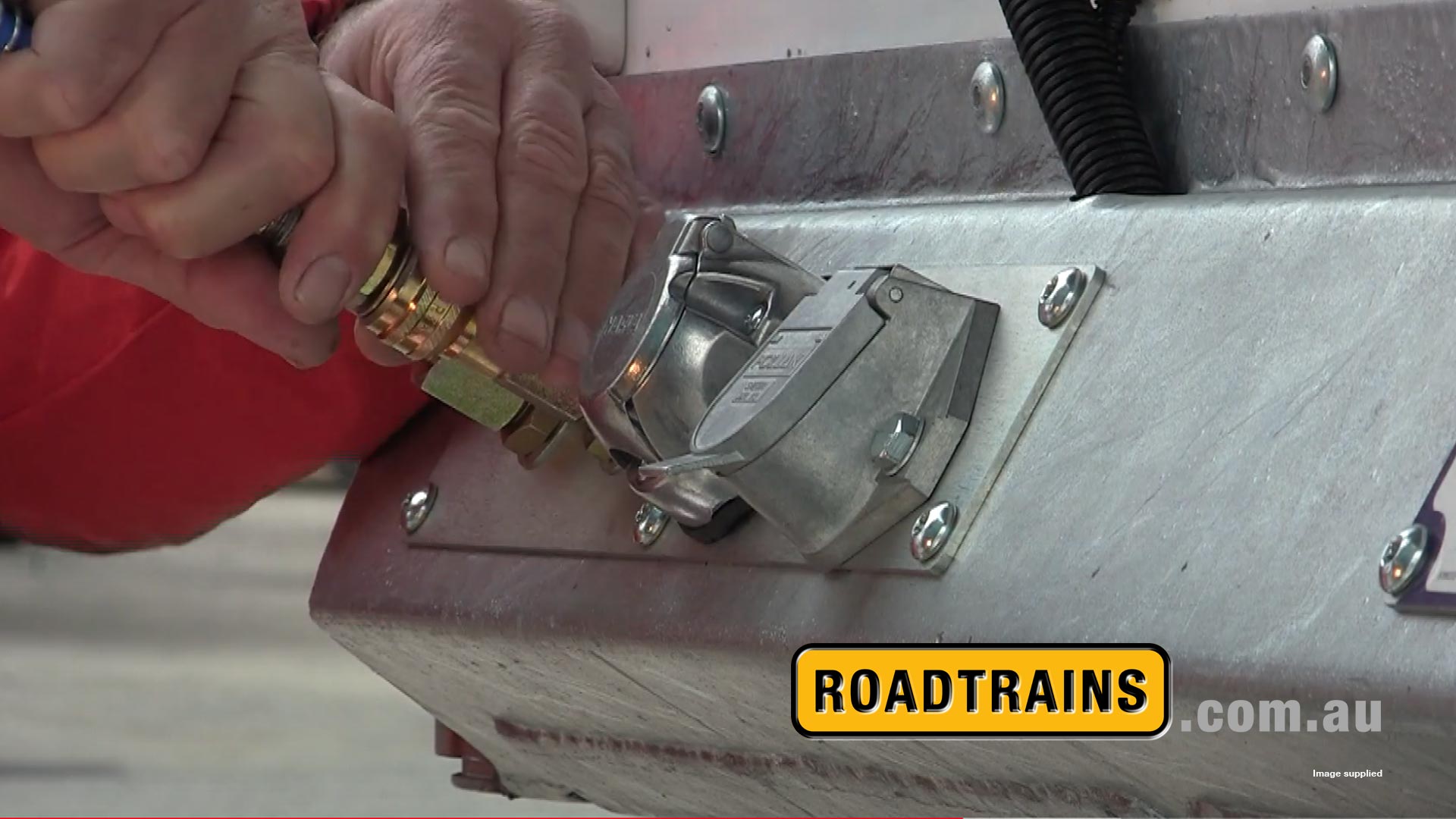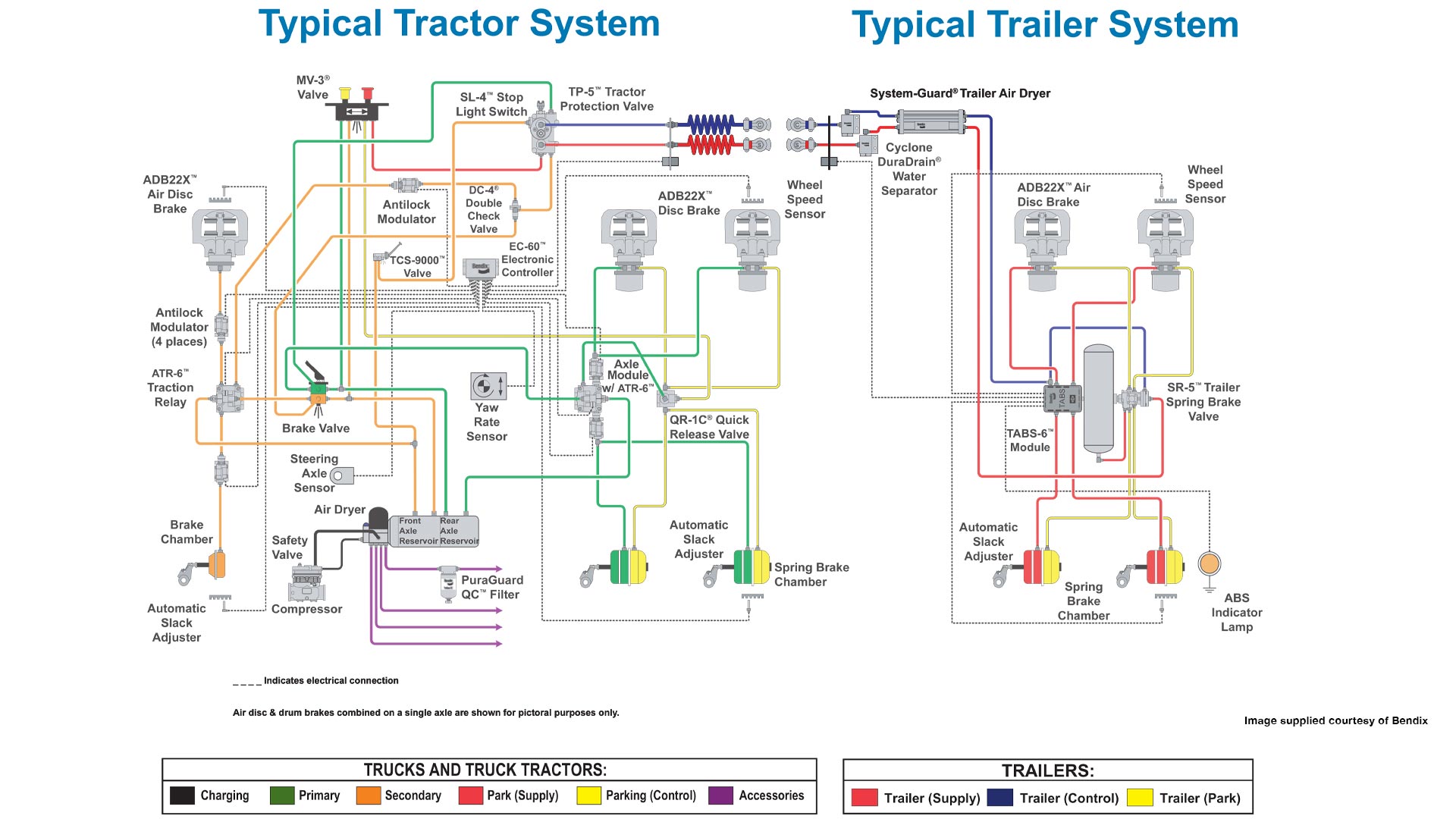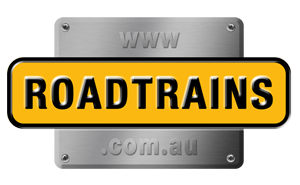 A semi-trailer was sighted driving at highway speed without any trailer brakes. Thanks to an eagle-eyed subscriber for submitting the image of the truck travelling down the freeway with the blue airline draped over the truck’s DPF exhaust system.
A semi-trailer was sighted driving at highway speed without any trailer brakes. Thanks to an eagle-eyed subscriber for submitting the image of the truck travelling down the freeway with the blue airline draped over the truck’s DPF exhaust system.
 The serious oversight of the driver to securely connect the blue airline to the trailer could have resulted in deadly consequences. But rather than point out blame, we thought we’d take this opportunity to use this image as the subject of a toolbox topic.
The serious oversight of the driver to securely connect the blue airline to the trailer could have resulted in deadly consequences. But rather than point out blame, we thought we’d take this opportunity to use this image as the subject of a toolbox topic.
Blue & Red Airlines
Firstly, it’s essential to understand the function of the blue and red airlines, between the prime-mover and trailer. The blue line is what’s referred to as the “service brake or control” airline. When a driver presses down on the brake pedal, the foot valve opens to supply air to the prime-mover and down the service line to apply the trailer brakes simultaneously.
 The red line is commonly called the “supply” airline. This line constantly supplies air to the trailer’s air tanks, which run the trailer’s air suspension and hold off the park brakes.
The red line is commonly called the “supply” airline. This line constantly supplies air to the trailer’s air tanks, which run the trailer’s air suspension and hold off the park brakes.
Consequently, if, like the operator in the accompanying image and has not connected the blue airline, then when the truck’s brake pedal gets pressed, it will only apply the prime-mover’s brakes. Because the trailer receives no signal from the prime-mover, normally delivered by the blue airline, the trailer brakes will not activate.
 The danger of a severe mishap becomes compounded on modern trucks fitted with an “active brake assist” (ABA) system designed to support drivers in preventing nose-to-tail accidents. Typically, when there is a risk of a collision, first, a warning is activated. Then, once the driver brakes, the ABA system supports where needed, with additional braking pressure. However, should the driver not respond, automatic emergency braking is activated. If the blue supply line is not connected, then the ABA system will not function to its full potential. Furthermore, if the ABA system initiated an automatic emergency braking event, the likelihood of a jack-knife is exceptionally high.
The danger of a severe mishap becomes compounded on modern trucks fitted with an “active brake assist” (ABA) system designed to support drivers in preventing nose-to-tail accidents. Typically, when there is a risk of a collision, first, a warning is activated. Then, once the driver brakes, the ABA system supports where needed, with additional braking pressure. However, should the driver not respond, automatic emergency braking is activated. If the blue supply line is not connected, then the ABA system will not function to its full potential. Furthermore, if the ABA system initiated an automatic emergency braking event, the likelihood of a jack-knife is exceptionally high.
A truck jack-knife is often described as when the towing vehicle, in this case, the prime-mover, skids or brakes, and the trailer pushes the towing vehicle from behind until it spins it around till it faces backwards. But, again, you can easily understand how quickly this may happen without the blue airline connected.
 PBR style air couplings.
PBR style air couplings.
PBR air couplings are the industry standard for truck and trailer airline coupling in Australia. They have a built-in safety feature that locks the outer knurled release ring preventing the barbed airline from disengaging.
When coupling and uncoupling airlines, driver’s line up the indent in the outer knurled release ring with the flat section of the fitting body. This will enable the outer knurled release ring to move inward, allowing the airline barb to release. To lock the air-fitting to prevent accidental barb release, rotate the indent on the outer knurled release ring a quarter of a turn.
 Prestart Checks.
Prestart Checks.
It would be best never to underestimate the importance of a prestart check. A thorough prestart check will reveal any anomalies with the vehicle, which you should rectify before commencing a journey.
Conducting additional prestart checks during your shift, especially after loading or unloading, is a wise move to prevent costly mistakes.
This article intends to share some insight into the consequences of what may happen when the blue airline is not connected correctly. The function of the blue airline and how to ensure it’s perfectly coupled.
If you’d like our team of qualified trainers to write a dedicated toolbox talk for your company, please use the contact form to reach out.
Related Reading:
How truck air dryers work
How to manually release truck brakes
Mercedes-Benz Truck Training



